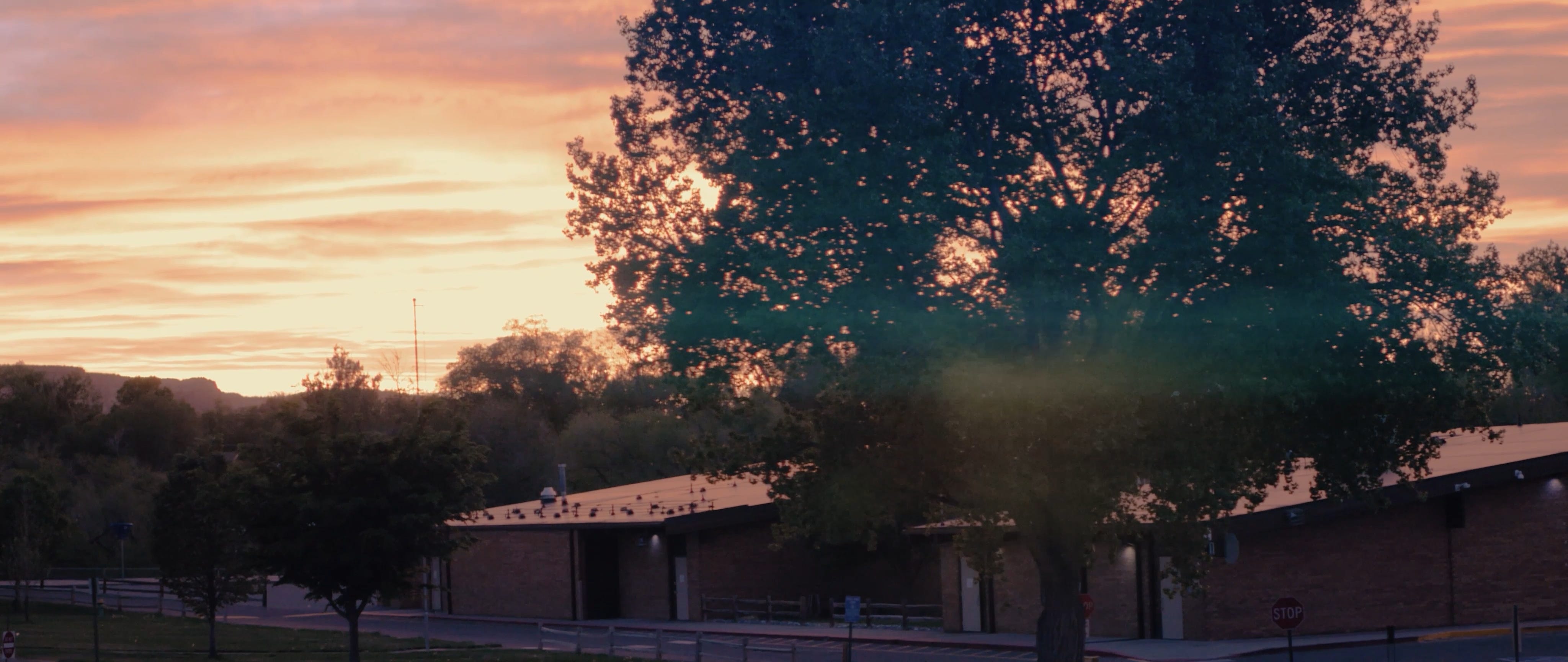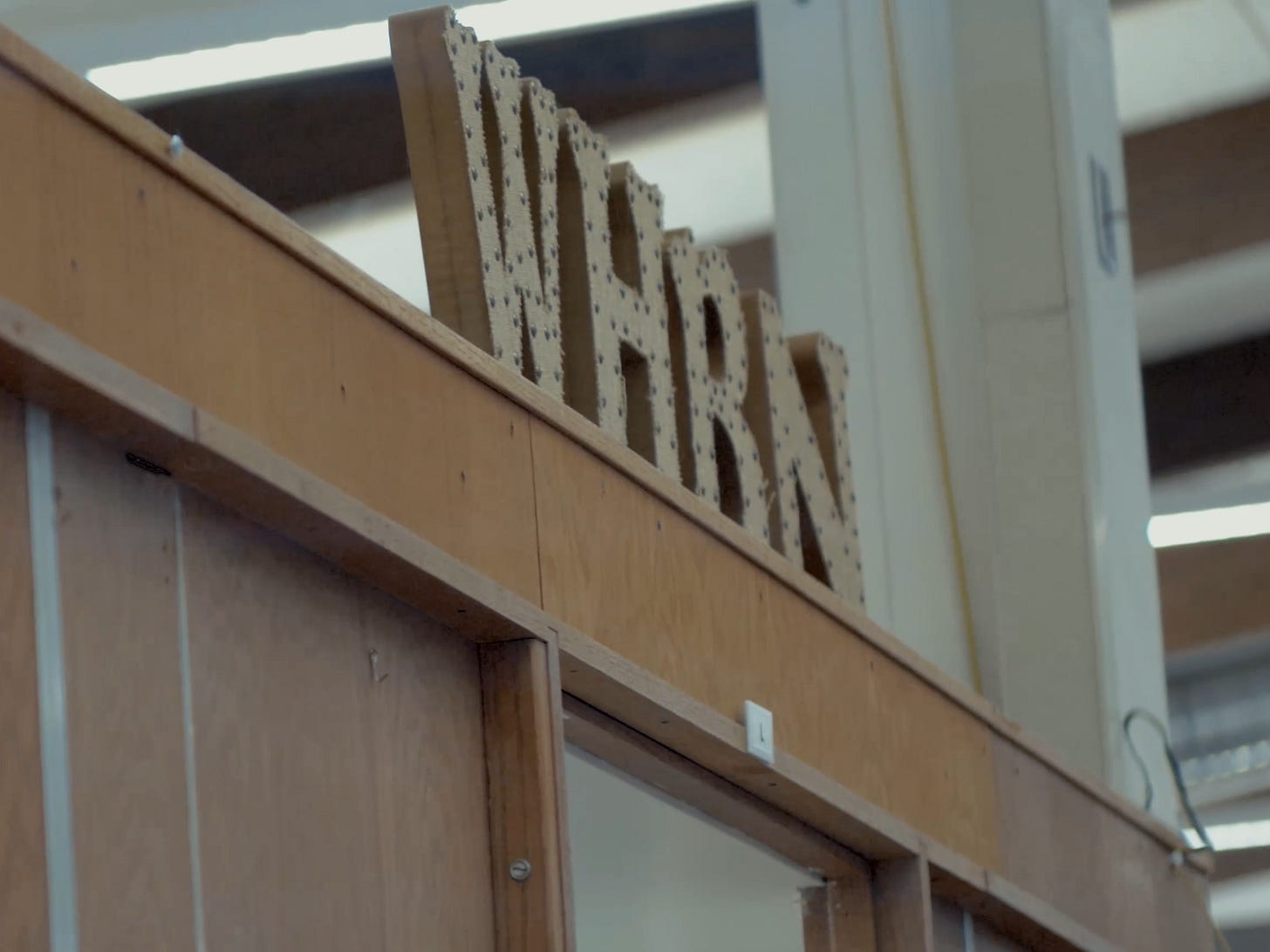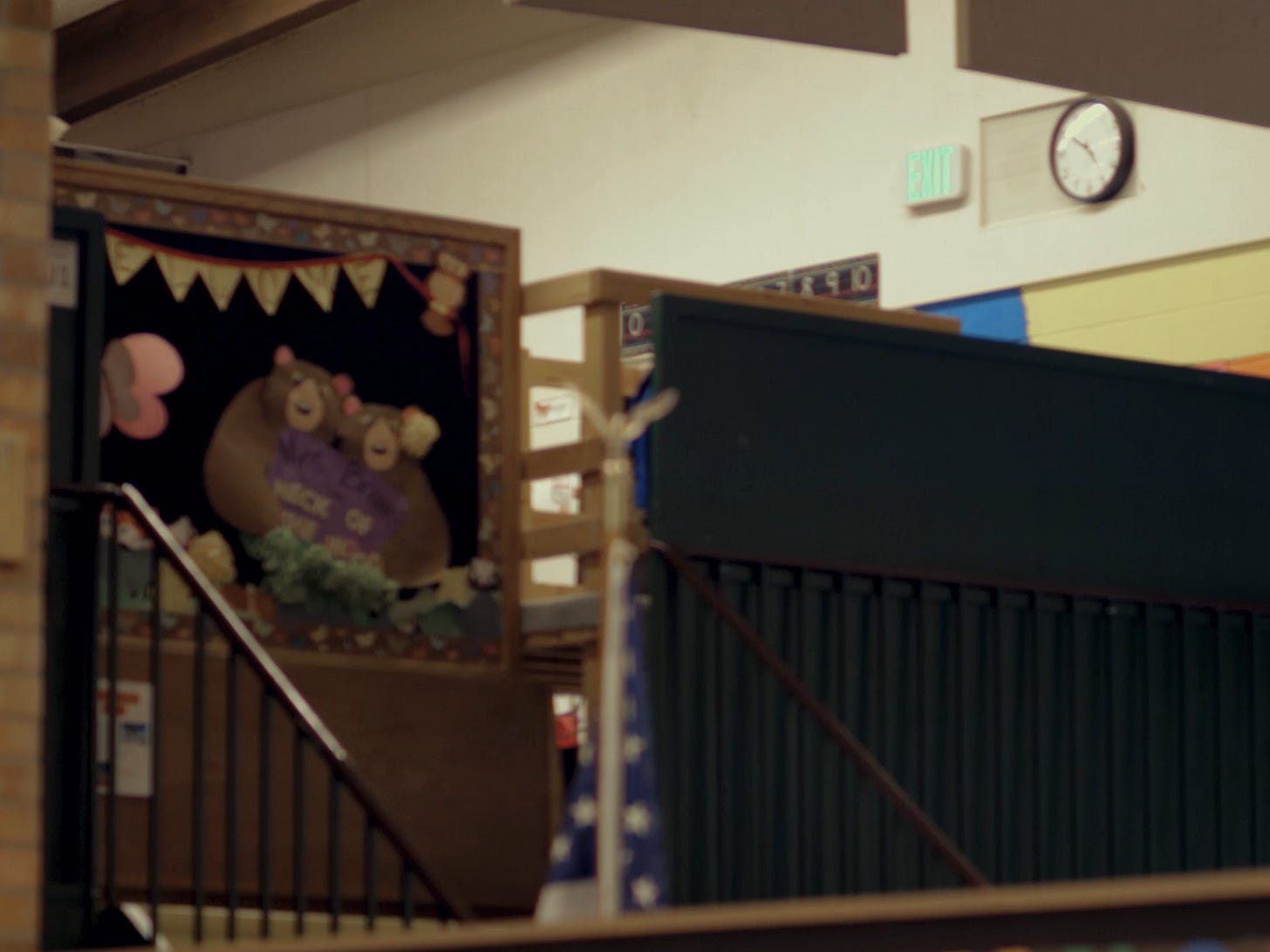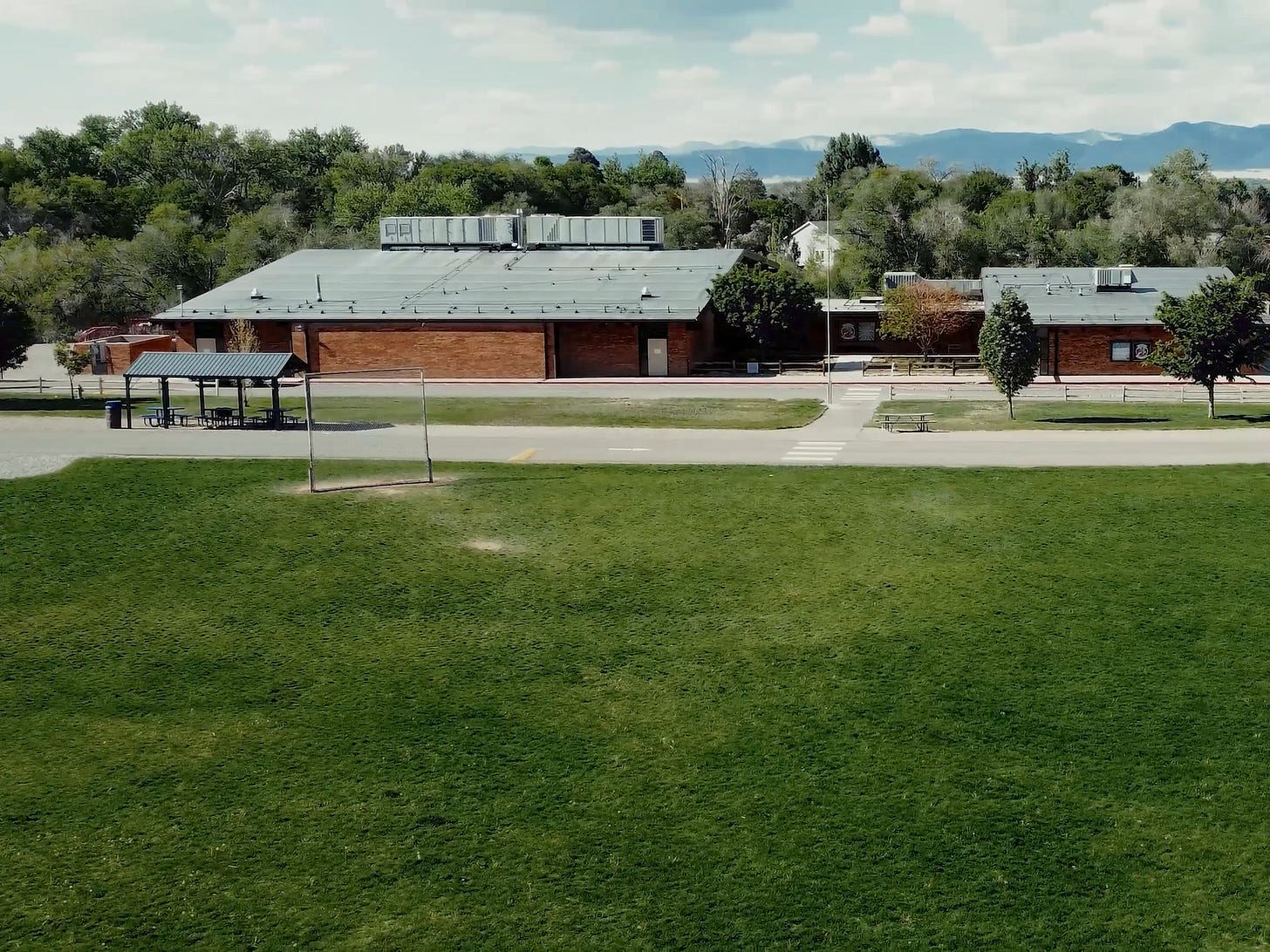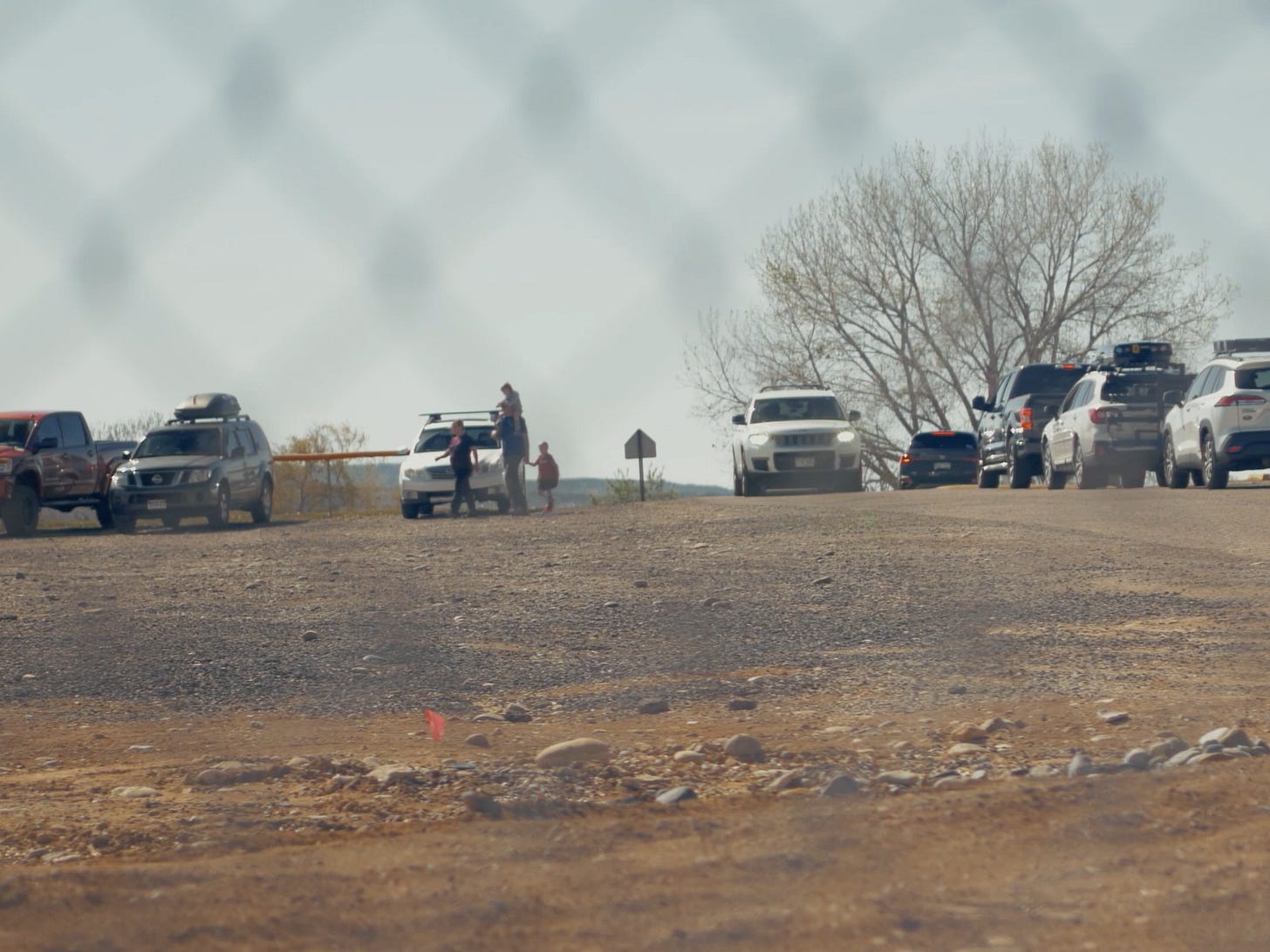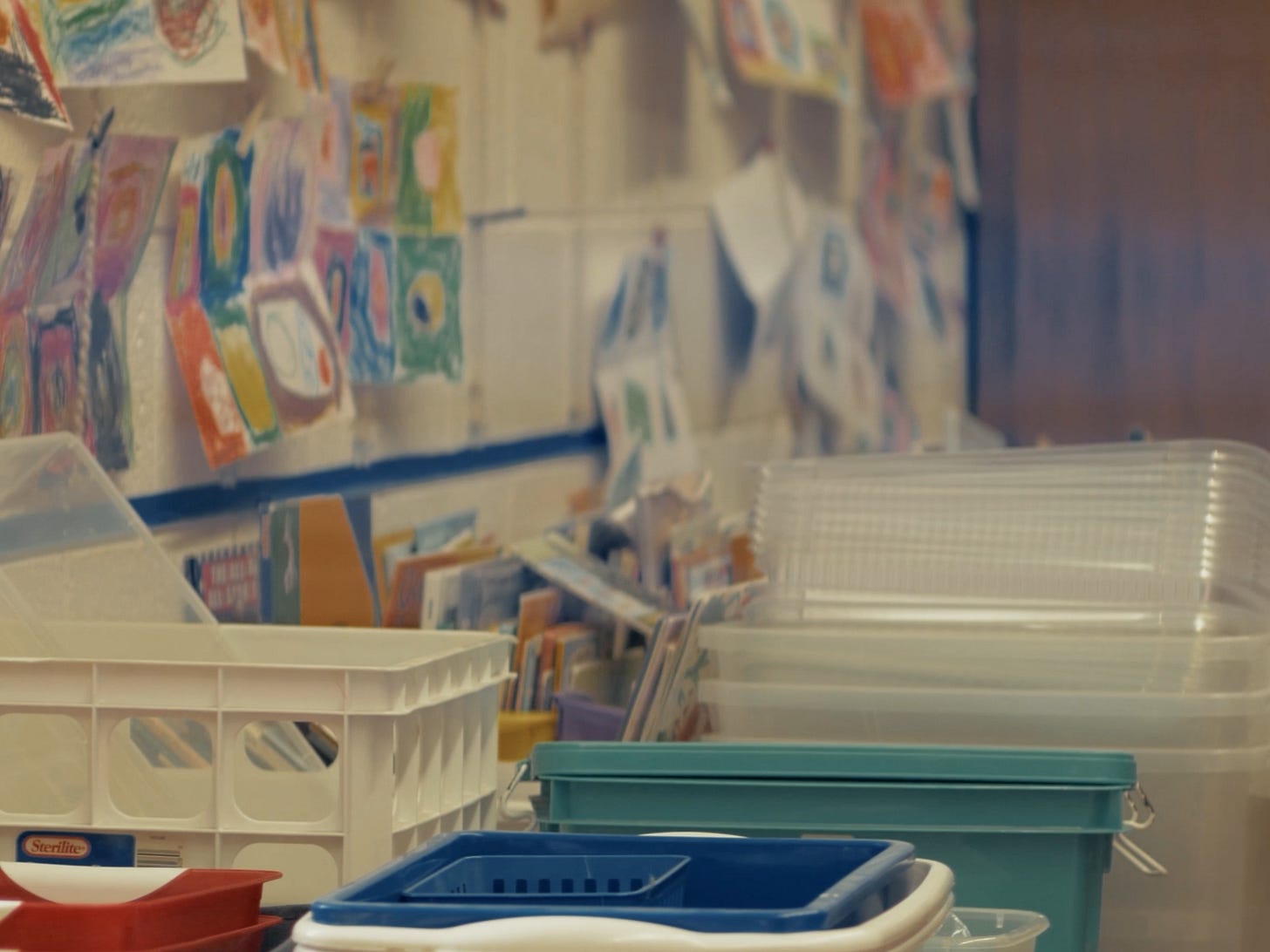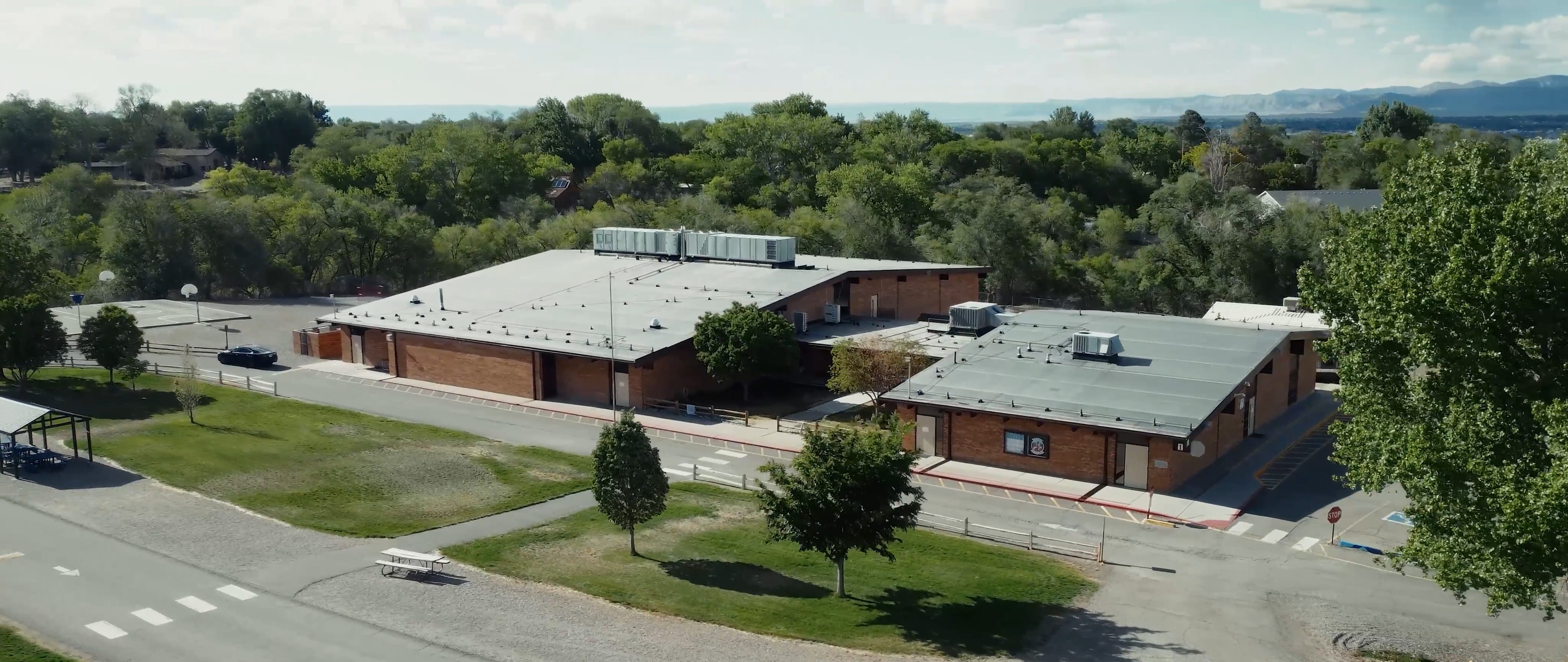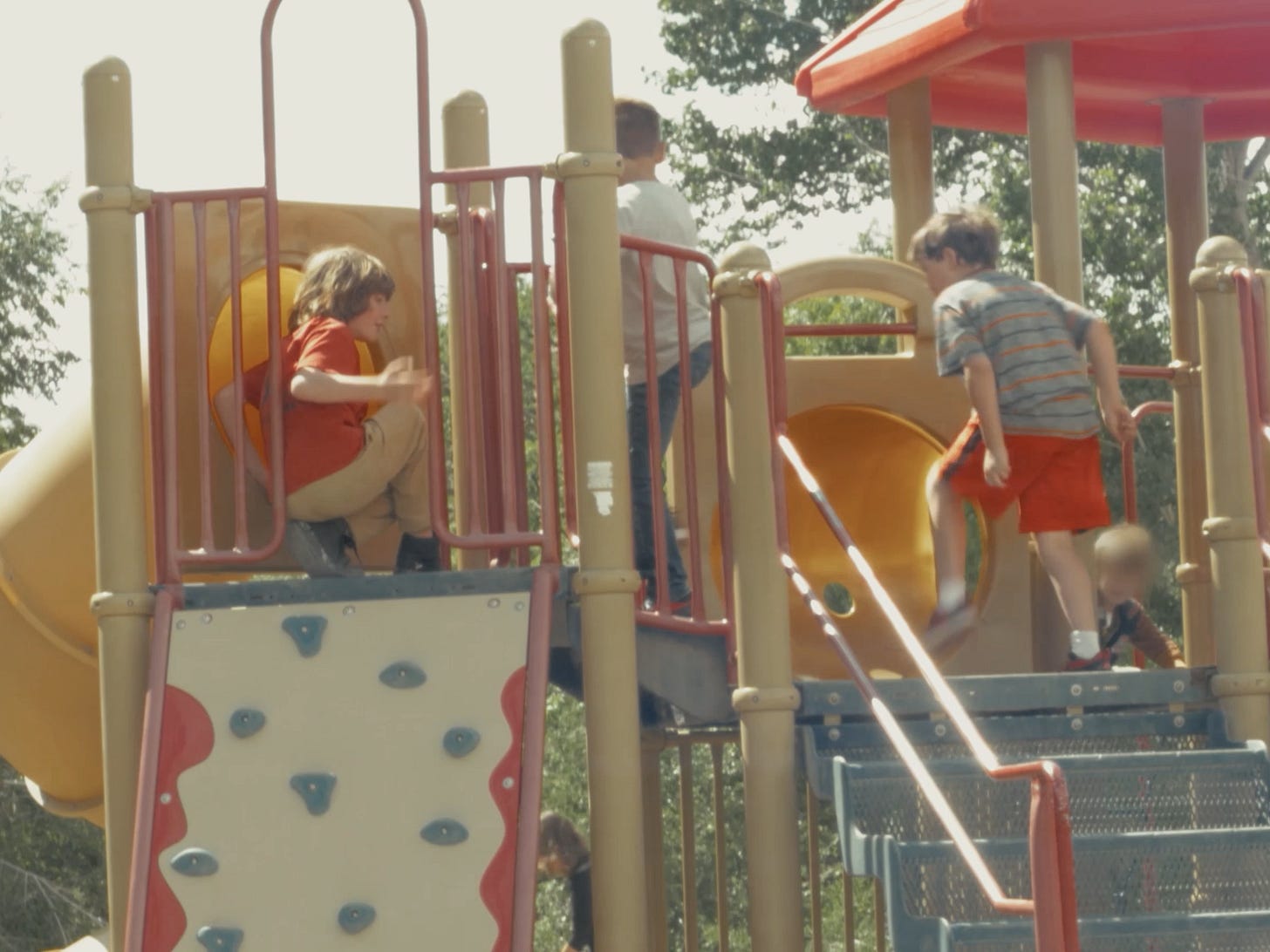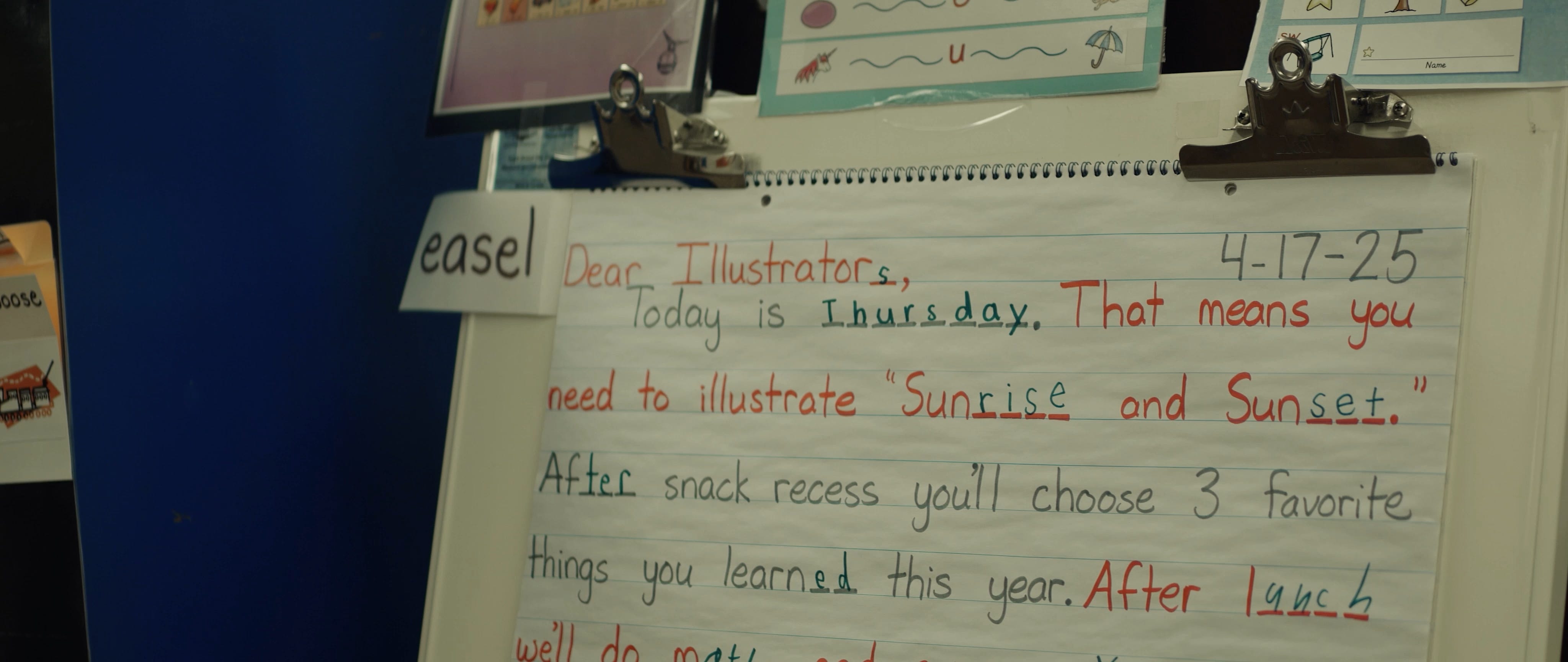How School Closures Affect The People Inside
Over 13,000 schools have been closed in the last decade. Here's a look at how it affects everyone inside according to the people of Scenic Elementary.
This video is available on YouTube to watch as well. The following story is similar to the video, but in a more readable fashion.
13,386 schools were closed from 2012-2022, which, as it is, is a huge number—but when you hear it, you might not even think about all the students, teachers and administrators that have had to move their lives around because their school has closed. That experience, especially for young, impressionable minds, is hard to comprehend. And when your education can determine whether you're set off on the right path or the wrong one, any disruption to it can be detrimental, especially for young kids.
Especially when elementary schools are being closed at a higher rate than any other kind of schools, the effects of school closures are incredibly important to know about. Last November, I found out that the elementary school that I went to was set to be permanently closed at the end of the school year, and it made me really interested in this topic of school closures, so I decided to go interview my teachers to see how a school closure actually affects the people inside.
The elementary school I'm speaking of is Scenic Elementary School in Grand Junction, Colorado. It's very different from a lot of other schools though—not only is it old, but when it was built over 50 years ago, it was made to be an open concept school with movable walls. It's nestled right in a neighborhood, but the interesting thing is that a big portion of the kids who go to school there don't even live nearby. In School District 51 (the district it resides in), Scenic is incredibly sought after, and people who don't live in its boundaries send in School of Choice applications just so their kids can get into this special place.
But what makes Scenic truly special isn't its weird architecture or even its location—it's the people. As Courtney Idler, the school's paraprofessional and jack-of-all-trades, put it: "It's like family. I definitely feel like I live here more than I live at home. All these kids are my kids, all these teachers are my family."
Nicholas Brenholtz, the music teacher, echoed this sentiment: "Scenic is so many other things, but when it comes down to it, everybody is there putting their full hearts into this school."
The school's motto, "Work Hard, Be Nice," isn't just words on a wall (even though they are in the above picture). First grade teacher Misty Grim explained: "Our motto is Work Hard, Be Nice, and that really is the secret to life." This philosophy has clearly worked—Scenic has some of the highest test scores in the district and even the state, earning tons of awards over the years. But more importantly, some of the nicest people I've ever met.
Despite this success, Scenic has been fighting for its existence for a long time. "Scenic has kind of been on the chopping block for a long time, and I think it's because of that mechanics behind how the school functions," Brenholtz noted. Idler remembered the constant threat: "They've been trying to close this school since the day I walked in the door. Ms. Grim used to walk Broadway with a picket sign."
But the threats became reality when the district actually started closing schools. After shutting down East Middle School in 2023 and the Fruita 8/9 school the following year, the district set its sights on elementary schools. In November 2024, a committee recommended three elementary schools for closure after scoring each school in various categories. The schools with the lowest scores would be closed—and Scenic was one of them.
The news hit the community very hard. "All of a sudden I hear people talking about they're shutting down schools and there's so many on a list. And I'm like, I don't even want to hear it because it's too stressful. Makes my hair fall out," Idler remembered.
Michelle Prall, the computer and library tech, remembered the disbelief: "We're a high performing school, so I think most of us thought 'it won't be us,' but we all had ideas of who it might be."
But when the report came out, reality set in. "Once they released the report on the schools, we all kind of had that pit in our stomach, like, well, it could be us," said Brenholtz. Kindergarten teacher Pam Shafer described the atmosphere: "There was a lot of fear. We knew our building grade was very poor, but it was kind of a back and forth from day to day."
However, the Scenic community wasn't going down without a fight. When news broke about the potential closure, the entire community rallied together. Brenholtz remembered the moment it all started: "I was called on Wednesday about it. On that Thursday, second grade was walking up the ramp and noticed on the sign out there that it said 'Scenic Strong.' I didn't notice it, the kids are the ones that pointed it out. It wasn't until after kindergarten was done that I opened my door, and there's an entire protest line lined up outside from all the parents saying that they do not want Scenic to close."
The community's response was immediate and passionate. Parents organized petitions, staged protests, and made their voices heard through local media. One parent captured the sentiment perfectly: "It feels like a slap in the face. We were not given any say in this recommendation."
The main reason given for Scenic's closure was the building's condition—it received a grade of F—but the community was ready to change that. Grim explained: "We have a family here who offered to put in lifts on the stairs so that we were ADA compliant. They were willing to do that at no expense to the district, and we had other parents offer to fix other concerns. But those offers were made and not accepted, so that was heartbreaking." Shafer added: "We have parents who were willing to donate the time and material to get the building up to code, you know, millions of dollars."
This rejection of community offers left many feeling like there was something deeper going on. As Idler put it, "If that's the kind of stuff we need to do to keep the building open, why aren't they doing it? So to me, there's something further behind it, like they just don't want the building here."
The final decision came on November 19th, 2024, during a Board of Education meeting that would determine Scenic's fate. After an almost three-hour presentation about the schools to be closed (Scenic, Nisley, and Clifton) the floor opened for public comments. For more than four hours, community members pleaded their case.
The testimonials were powerful and heartbreaking. Former students credited Scenic with their success: "Without the support of the teachers of Scenic Elementary, I would not be attending CMU on a full ride academic scholarship for the nursing program."
Parents spoke about the unique culture: "Scenic has provided us a culture of support, love, that is embedded in them. That is not taught, that is embedded. Our students are their priority."
Hearing the testimonials of the kids was the most heartbreaking, though. "Scenic is like home and everyone is like family. Please don't take that away from us.” “I beg you, please don't shut down Scenic Elementary." "Dr. Hill and board members, please do not close our school."
The board voted to close Nisley Elementary that night, then postponed the decision on Scenic and Clifton until two days later. "I was like, why even make us wait? Just say it then. But then, you know, they just wanted to raise the hope again. Which was sad," Idler remembered.
When Friday came, the board made their decision. The vote was 5-0 to close both Scenic and Clifton Elementary schools. Prall, who was at the meeting, noticed: "When they all voted yes to close the school, none of them said the word 'yes,' it was just 'yeah.' And none of them could look up. So I feel like they did know, they did hear, but they felt like their hands were tied."
The community's frustration was palpable. As Grim reflected: "I think our concerns were listened to. I don't think they were heard." Idler added: "So it's like people want to know, people want to be heard. And when people act like they're listening and nothing comes of it, makes you wonder if you were ever actually heard."
Many felt the decision was already made before the community input even began, Brenholtz being one of those: "I think by the time that Dr. Hill had made his recommendation, everything was set in stone. They had to go through the red tape to make sure that they did the protocol to actually close down the schools, but I think by the time that he had made his recommendation, they knew at that time. So no matter what we did, nothing would have changed that."
It's also worth noting that the president of the board is a very politically and religiously motivated woman who is also a real estate agent, and as a whole, the board members feel disconnected from the schools for many. I can't speak for everyone, but I know a lot of people who feel like this board is really disconnected from what's actually going on in the schools, and that's a big reason for all of these closures.
Some people even suspected ulterior motives beyond budget concerns. As Idler put it: "They're just stuck on the 'I don't want the building there. I want the land.' Because really, is land worth taking that learning and lifestyle and whole root ground to teaching kids?"
Regardless, in this whole adventure, it feels like the district’s main priorities were about budgets and declining enrollment—and those are legitimate concerns—but the first consideration should always be the kids, and research shows they're incredibly affected by these closures.
A study from Jeonghyeok Kim (https://edworkingpapers.com/ai24-963) explores exactly this issue. The paper says, “While school closures are often justified as inevitable due to declining enrollment or budget constraints, district leadership typically argues that consolidation will ultimately benefit affected students by offering them access to better resourced schools, high-achieving peers, and economies of scale.”
This is exactly what District 51 did. On their website, they stated: "Operating small schools often limits the ability to offer full time services, activities and clubs. Larger student populations help support many programs, ensuring all D51 students have access to high quality services that they deserve."
But here's the problem: the research shows that moving kids to new schools after closures can result in "significant environmental changes." Students have to adapt to new school disciplines and requirements, they're separated from their friends, and all of that creates a ton of new problems.
The numbers are sobering. In the years after a school closes, reading and math test scores drop more than 0.05 standard deviations, days of absence increase by 0.13 days, and days of disciplinary action go up by 0.36 days. While test scores tend to recover after some time, absences and disciplinary issues often don't. High school graduation rates decline, college completion rates drop, and employment rates and yearly earnings decrease too. Certain groups of students—particularly Black and Hispanic students—are disproportionately affected by school closures. And the estimated cost of these closures? Around $7.6 billion annually.
The teachers I interviewed shared these research-backed concerns. Grim noted, "Some kids will be fine. Other kids it will be an adjustment. It's going to be a big change and everybody handles changes in a different way."
Prall was particularly worried about vulnerable students: "Scenic has always been a very inclusive school. Every year we have kids from different backgrounds, different abilities, whether it be autism or just lower readers, lower academically. And those kids feel so safe and wonderful here. I worry about them going to these schools where it's bigger. And so I think for them, it's going to be very difficult."
The transition from a small, intimate school to much larger institutions is a major concern. As Grim explained, "Kids are going into schools much bigger than we are. So it's going from a smaller school to a very large school is going to be culture shock for them."
There's also the psychological impact to consider. Idler observed: "I think that we've taught these kids a lot that change is good for you and that you can function with it, but I think that they also have the fear of what's going to happen if they go to this school and that school closes. They are scared of getting comfortable with people or going back to a school that maybe they had came here from that had let things slide that shouldn't have slide."
Beyond the emotional adjustment, there are practical concerns too. Many kids will face transportation challenges due to boundary changes, making schools much farther from their homes. Some who used to walk to school will now need rides, and parents who work early shifts will have to restructure their routines—often leading to tardiness or absences.
But it's not just the kids who suffer—teachers face their own set of challenges when schools close. I saw this firsthand last year when my own school, the Fruita 8/9, was closed. The district consolidated three schools serving grades 6-12 into two, which sounds logical on paper. But here's the cruel part: the district guaranteed all the middle school teachers their same positions for the following year while leaving all the 8/9 teachers to hunt for jobs for the rest of the year.
That school had some of the best teachers I've ever had, and seeing them in that position was heartbreaking. We actually staged a school-wide walkout to stand up for our teachers, and one student captured our feelings perfectly: "I felt it was unfair that the middle school teachers had a guaranteed opportunity to teach at this school, and that the 8/9 teachers did not."
My former English teacher, Stephanie Lacount, gave me this comment about the closure: "The closure of the 8/9 school was a loss overall for the entire community. It was an oddity from its inception, but one we made work in the best interest of kids. We were always among the highest performing schools in the district, but performance mattered less than a budgetary matrix. The closure was done to us, but never with us."
The same pattern is repeating at Scenic. While the district guarantees most teachers a job somewhere in the district next year, there are no guarantees beyond that. A history teacher might end up as a lunch lady 30 minutes away—similar things have happened before.
For Shafer, the job search had been particularly difficult, she explained: "I'm still looking for a job. It's very stressful. It's been degrading. Depressing. You know, we're having to interview like we're first year teachers. After I've been in the district 25 years now. I've had four interviews, and I just felt like either I felt like they went really well and they went with someone else, or I felt like they already had someone in mind. So it was like a double whammy of depression. And I worked a lot of years to get into a school like Scenic and into kindergarten. And it's taking a step back in my career that I shouldn't have to do at this point."
The stress affected everyone. As Grim described, "It has impacted every grown up in this building because it's been a process of, we all had to get resumes ready. We had to get letters of recommendation from people. So it was like starting over again. And then we had to set up interviews and go to interviews, and that was very stressful."
This job search stress had a dual impact on teaching. On one hand, it was incredibly distracting. Grim admitted: "In all of this, we're still having to teach. So, I can speak for me personally, it had an impact on my teaching because I couldn't be my best when my mind was worried about the interview, and will I get a job? And what if I don't?"
Shafer echoed this: "It has affected my teaching. I mean, you know, it's hard to teach when you're worried and you're distracted by looking for job postings. Plus the pressure to pack up our classroom and be out of the building on May 22nd when I don't have a place to go to.”
But here's what was remarkable: despite all this stress and uncertainty, these teachers were still giving their all to their students. Brenholtz noted, "I think these teachers here are, in a great way, very professional, but also in a terrible way because inside they are crying and breaking down and scared and they have no idea what next year is going to look like. But if you were to walk into any of the classrooms, you would never know that. You would never see their instruction impacted."
Prall agreed: "The week after we were told we were closing, I can't remember what I was doing, but I had to go through the classrooms, and it was like it was any other day. Listening to the teachers teach. They just are so good at their job, they can put that aside and be teachers.” As Idler put it, "These women and few men that are here… will not let anything affect their teaching because these kids are their gems."
The uncertainty was perhaps the worst part, Brenholtz explained: "But inside, absolutely. Everybody's anxiety, especially because they tell you that you're closing in November, but they don't really post jobs until late February, early March, something like that. And so then you're sitting around for three months figuring out what are you going to do because you can't do anything. You're powerless."
Lacount's reflection on her experience with school closure captured the broader professional impact: "As a professional of 20 years, having been through the closure of my school with all of the incredible loss that happened, I can honestly say I've never felt more personally or professionally devalued. What is the message supposed to be to teachers when they are displaced and everything they built is gone in an instant? Sorry? You'll find something new? If you actually care about kids, it doesn't matter where you work? The platitudes offered are hollow at best."
The community's feelings about the closure varied widely. Some people understood that the district needed to save money, while others saw it as a devastating loss. As Lacount pointed out, "That's the problem with running a public institution like a business. You easily forget that the institution was built to serve people, but when budget is your primary focus, the people aren't. Solutions to budget shortfalls is cutting, but we can't cut what directly affects kids and the staff that serve them. We will have to find a way to make public education, not privatization of education, an actual priority in practice and not make empty promises."
The impacts of school closures reach far beyond just students and teachers—they affect entire communities that have been built around these schools. This came up repeatedly in my interviews. Brenholtz mentioned one unique aspect of Scenic: "The fact that Scenic meets every single Friday, I think is totally obscure and different from any school probably anywhere to meet every Friday."
Grim reflected on the broader community impact, saying, "I think the people in this community who are really forced to make a change and go somewhere else, that's going to be a hard adjustment."
Shafer discovered through her job interviews that the sense of community isn't unique to Scenic: "As I've been interviewing around, every school has that same feeling about their school. The things teachers were saying there about Lincoln Orchard Mesa were things that we would say here at Scenic about our staff and our school and just that sense of community." When I confirmed what she was saying, she quickly added with a smile: "Well, it's a little extra special, but yeah."
For School of Choice families, the loss was also large, Grim explained: "I think it's very sad for the families who choose to come to Scenic because that choice was taken away. So our School of Choice families have lost out on an opportunity to be part of the Redlands community."
Despite all the heartbreak and challenges, I didn't want this story to be entirely negative, so I asked the teachers if they could see any positives coming from this situation. Their responses showed the incredible resilience and optimism that make these teachers so special.
Brenholtz said, "I think it will grow to be a positive just because that's just my outlook on life. Like it sucks right now, but I think down the long run, people are going to see different positive impacts from it. I don't know what that would be, whether that be some teachers or students that were very mostly attached to this and then went out into the world and realized it's not as bad as they thought it was. That could be, but I don't know. But that's going to be a long journey."
For Shafer, there was a different silver lining: "I look forward to having a teaching partner again. Our team, with the declining enrollment, I have been the only kindergarten teacher again. And that's kind of lonely. So I look forward to having a partner."
Beautifully, several teachers saw this as an opportunity to spread Scenic's special culture to other schools. Prall explained, "The one thing I've tried to tell staff that are struggling with leaving here and moving on—you know, our motto is WHBN: Work Hard, Be Nice, which is something that you can take into your whole life. And it gives us a chance because all these teachers are going on to different schools to take a little bit of that and maybe spread it a little further."
Idler agreed: "I think the spreading the WHBN that a lot of people don't understand what it is. Spreading it to other schools to help that intertwine with whatever nice cool stuff they have. It just makes it spread wider."
There was also the lasting relationships that wouldn't disappear with the building. Idler noted, "I think a lot of people will still meet up in places or make visits or things like that, because even outside of this building, all the teachers are still friends and still family. Like it's good to have that because even though we're not all going to be here, we still check up on each other. That's a huge thing."
These are absolutely some of the best people I've ever met, and it’s incredible that they could even find something remotely positive in such a difficult situation. It’s heartbreaking to see such an amazing place go, but as they say, all good things must come to an end.
The personal loss was evident in their reflections. Idler, who had spent so much of her life at Scenic, said: "My life has been crazy through this place. This is a long time. So who knows? I was hoping you'd have kids and bring your kids here. Who knows? It's just sad."
Prall felt similarly, saying, "Well, it's kind of like they've grown into a family and you're in a family, so maybe not everybody gets along all the time, but you learn how to function and how to work."
For Grim, who had been at Scenic for 25 years, the relationships were everything: "The amount of people you meet in 25 years with students and parents and people I've worked with, it's a lot of relationships. It's hard to say goodbye to that."
But perhaps Idler put it best when thinking about the bigger picture: "I think the change is good for some people that don't like the change. It's like they're forced to deal with it. And that change as a person in general, like it gives them more perspective after they've had to crash face down. Like sometimes you really got to fall to get back up. If you don't have a choice, it's going to make or break yourself."
As I’m wrapping up writing this, I keep coming back to what made Scenic special. Yes, it was the weird building and long history—yes, the high test scores and the awards were incredible—but really, it was what Brenholtz said: "Scenic is so many other things, but when it comes down to it, everybody is there putting their full hearts into this school."
That motto—Work Hard, Be Nice—wasn't just something they said. As Grim explained: "That really is like the secret to life. I mean, if you can work hard and be nice with whatever you do, that's really what it's all about. So that motto is something that means a lot to me and I've seen the impact it has on kids and how kids take that motto with them."
When schools close, we lose more than just buildings and items on a budget. We lose communities, relationships, and places where kids learn not just math and reading, but how to be good human beings. As Idler philosophically concluded: "And I'm like, see, everything happens for a reason. It's just, are you going to take it and choke it down, or are you just going to let it ride?"
The closure of Scenic Elementary represented thousands of similar stories across the country—communities torn apart, teachers displaced, and kids forced to adapt to changes they never asked for. While the research clearly shows the negative impacts of school closures, the human stories behind those statistics make it impossible to view these decisions as simply necessary budget cuts.
The most important lesson from Scenic's story isn't about policy or politics—it's about the incredible dedication of educators who put their students first, even when their own professional lives are in chaos. It's about communities that rally together to fight for what they believe in, even when the odds are stacked against them. And it's about the resilience of everyone involved, who somehow manage to find hope and positivity even in the face of loss.
The school may now be gone, but the values, relationships, and spirit of WHBN will live on wherever these teachers and students go next. That's the real legacy of Scenic Elementary—not the test scores or awards, but the way it showed that schools are about so much more than buildings and money. They have people, community, and hold the belief that every child deserves a place where they can learn, grow, and feel like they belong. When we close schools, we're not just closing buildings—we're closing chapters in hundreds if not thousands of lives, and that's something we should never take lightly.



